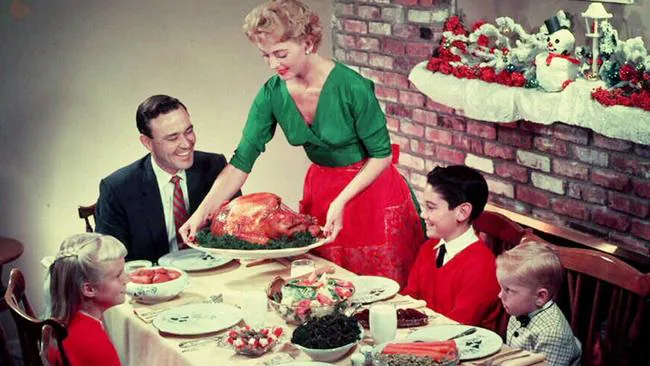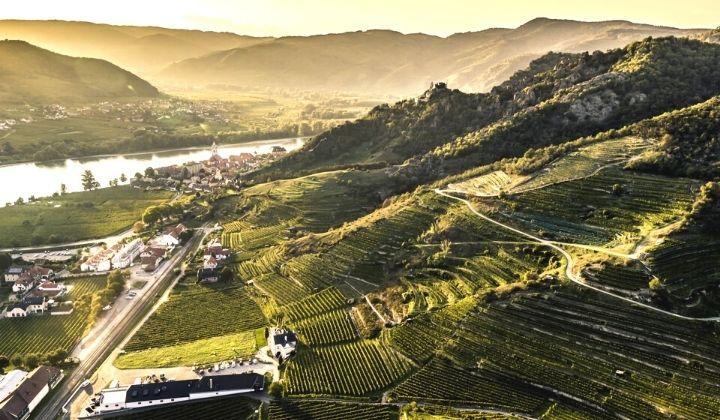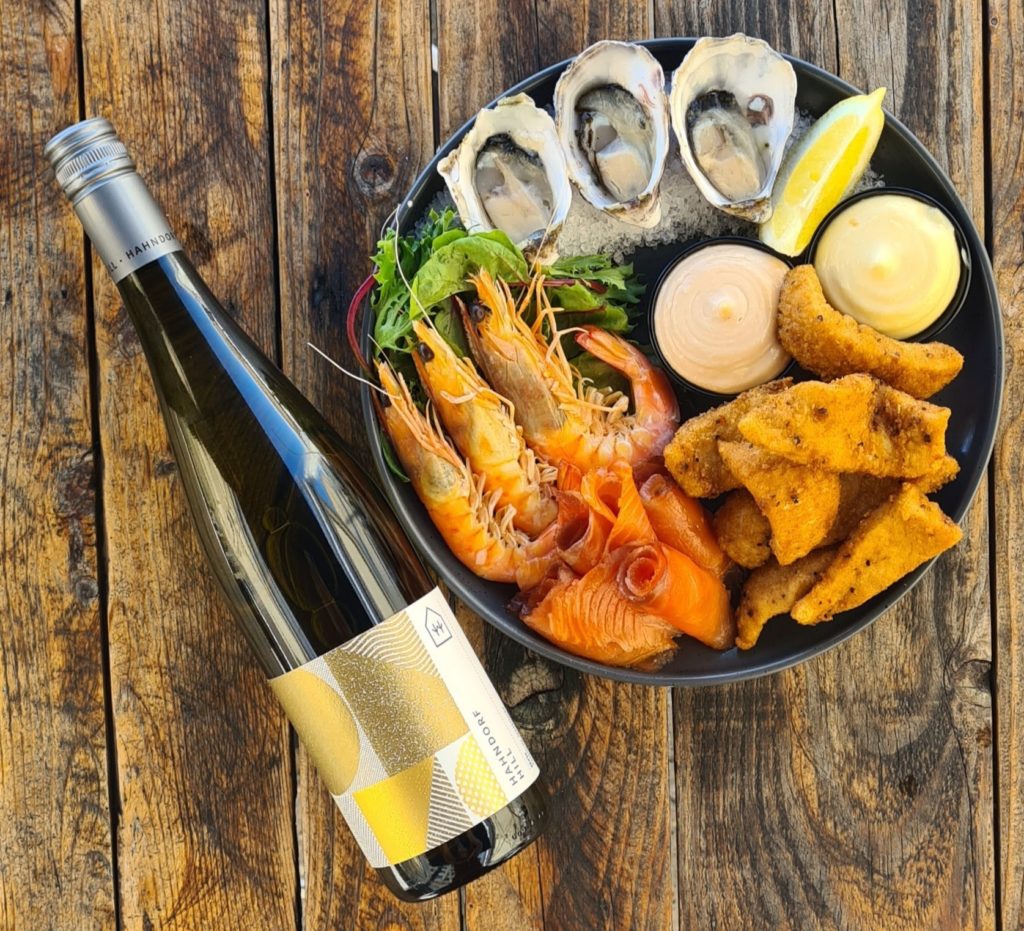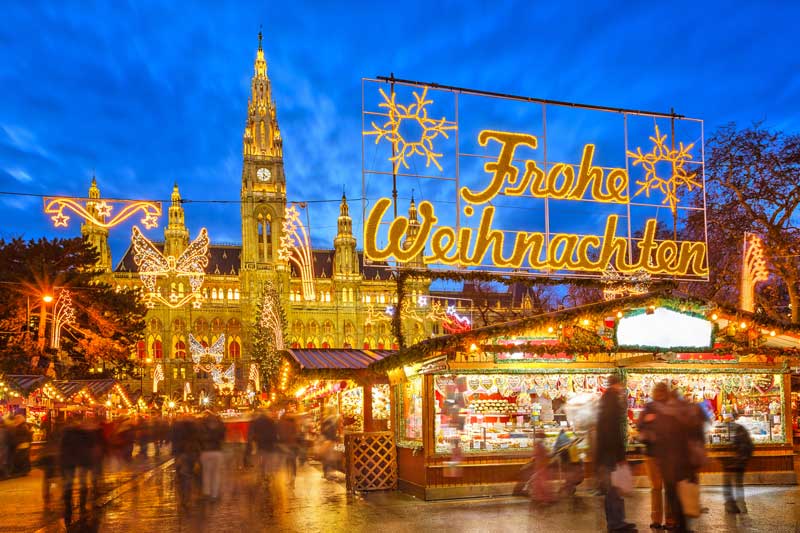
I relish this time of year; I delight in watching the excitement and anticipation build incrementally in my young daughter; the brainstorming for creative and meaningful gifts; and I especially enjoy the Christmas light displays put on by so many of my neighbours.
That being said; I am sure it will come as no surprise to regular readers of this blog that my absolute favourite part of the whole festive season is its grand finale, the Christmas Day very, very, looooong lunch.
I start planning the menu weeks ahead of popping the crackers and tearing the always slightly too small paper hats on my slightly too large head. By early December I am mentally scheduling cooking methods, times and temperatures, and all the while writing and re-writing the wine list. A Christmas Day wine list can be a very fluid thing (forgive the pun). Trying to pair a wine with a range of dishes and an even broader range of guests can quickly get overwhelming.
Let us then take a moment to look at what our Austrian friends enjoy when sitting down to a traditional Christmas meal and then what is becoming increasingly popular on Australian festive tables.

Gathering together with friends and family at Christmas has been a European tradition for millennia and as much as turkey is indigenous to North America, other proteins dominate Austrian tables at this time of year. Climactic and social influences have also had a profound effect on the traditions embraced by everyday Austrians; this has resulted in several key differences between how we in Australia and how Europeans celebrate essentially the same thing.
One of the most obvious differences is the weather; an Adelaide Christmas is often a very warm affair where shorts and a t-shirt are ubiquitous. When we compare this to Austria, where the winter snowfall in Vienna regularly measures over half a metre, we can see why they would prefer a more intimate indoor event. Another significant difference is that Austrians exchange gifts and share the main celebratory meal on the evening of Christmas Eve. Like many predominantly Catholic countries, a large number of Austrian families observe the Advent period of which fasting is an important part. It is this observance of religious fasting that has also helped to establish fish and poultry as the default meats on most tables.
The two most commonly served dishes at an Austrian Christmas are carp fried whole in butter and served with roasted greens, risotto and potato dumplings, and roast goose with savoury baked apples, pickled red cabbage and roasted root vegetables. As I have never tried goose, I have attempted to follow the recipe sent to me by the grandmother of a dear friend in Vienna; delicious, even if I do say so myself!
What to pair with this dish? I need something that will cut through the richness of the goose, balance the acidity of the pickled cabbage AND complement the spice of the baked apples. There are a lot of competing flavours on the plate but I can think of only one thing I want in my glass, a Gruner of course. I fancy a Gruner of complexity, so let’s go to the Wachau, I need freshness and finesse so let’s look at a Federspiel, and I want a bottle from a house of bulletproof consistency, so the 2020 Domäne Wachau Federspiel ‘Terrassen’ is just the wine for the job.

The wines, people and home ground of Domäne Wachau have featured in this blog many times, but here are a few bullet points for newcomers. Established in 1938, Domäne Wächau is a large co-operative of around 250 grower partners and is the only house in the region that can boast fruit from all of the Wachau’s most prestigious vineyards. Their portfolio includes wines in each of the three recognised regional styles ranging from the easily approachable through to wines of great complexity and gravitas. And, as a member of the Vinea Wachau, they are committed to maintaining the incredibly high production standards designed to protect the region’s global reputation for integrity and quality.
The 2020 ‘Terrassen’ Gruner Veltliner has sourced its fruit exclusively from the famous dry-laid stone walled terraces that climb up the valley’s impossibly steep slopes and hug its curves. Orchard fruits such as green apples and pears lead the palate and are dutifully followed by lime and ruby grapefruit; but there is also something else, an umami-like savouriness that took me three full days to articulate. Right at the end of the palate, almost like a final regal wave goodbye, is just a whisper of the finest blue cheese. This wine is delightful on its own and especially well equipped to complement a dish of many competing flavours.
The main meal shared with friends and family at an Australian Christmas celebration has undergone many generational shifts. In my grandfather’s day, they followed the English template of glazed ham, roast turkey, heaving platters of brussels sprouts and other assorted boiled-to-a-grey-mush vegetables, the flavour of which was never effectively masked by the gloopy gravy. Later, dishes cooked on the BBQ slowly crept in, and prawns or crackly roast pork served with a variety of salads came into vogue.
Today, large crowds cleaning out seafood markets has almost become a Christmas tradition in and of itself. Prawns, calamari, oysters and salmon served with fresh cold salads and sides of char-grilled asparagus or broccolini, mark the table of a household that has fully embraced all our local terroir has to offer. Australia enjoys some of the cleanest water and finest seafood in the world, a fact that has helped to drive the heavy roasts and boring veggies off the Christmas table.

Our 2021 ‘Gru’ Gruner Veltliner is stylistically inspired by a number of wines in the DAC categorised Federspiel or Klassic classes and is the perfect wine to pour beside fresh seafood. The white stonefruit and citrus of the front palate is buoyed by the most invigorating acid, while gruner’s signature rub of texture marshals all the fruit, spice and acid in such a way so as to heighten the whole culinary experience.
I have said many times that Gruner is your best friend in the kitchen and can always be relied upon to complement just about every dish – and Christmas cuisine is no exception. The festive season is usually a time for coming together in gratitude and goodwill, but whenever real people gather, especially family, there are always tensions and curveballs. This person won’t sit next to that person or one unexpected guest’s food allergy has tipped the menu on its head. It is in moments like this, where you can feel all the weeks of hard work crumbling and things beginning to unravel, that Gruner Veltliner really comes into its own. I am not saying that Gruner is a universal panacea but, no actually, that is exactly what I am saying!
So this festive season stock the fridge and esky with a selection of Gruners and you simply can’t go wrong; and from all of us here at Hahndorf Hill Winery, I would like to thank you for all your support this year and wish you all a Merry Christmas and Frohe Weihnachten.
Prost, Jack.


